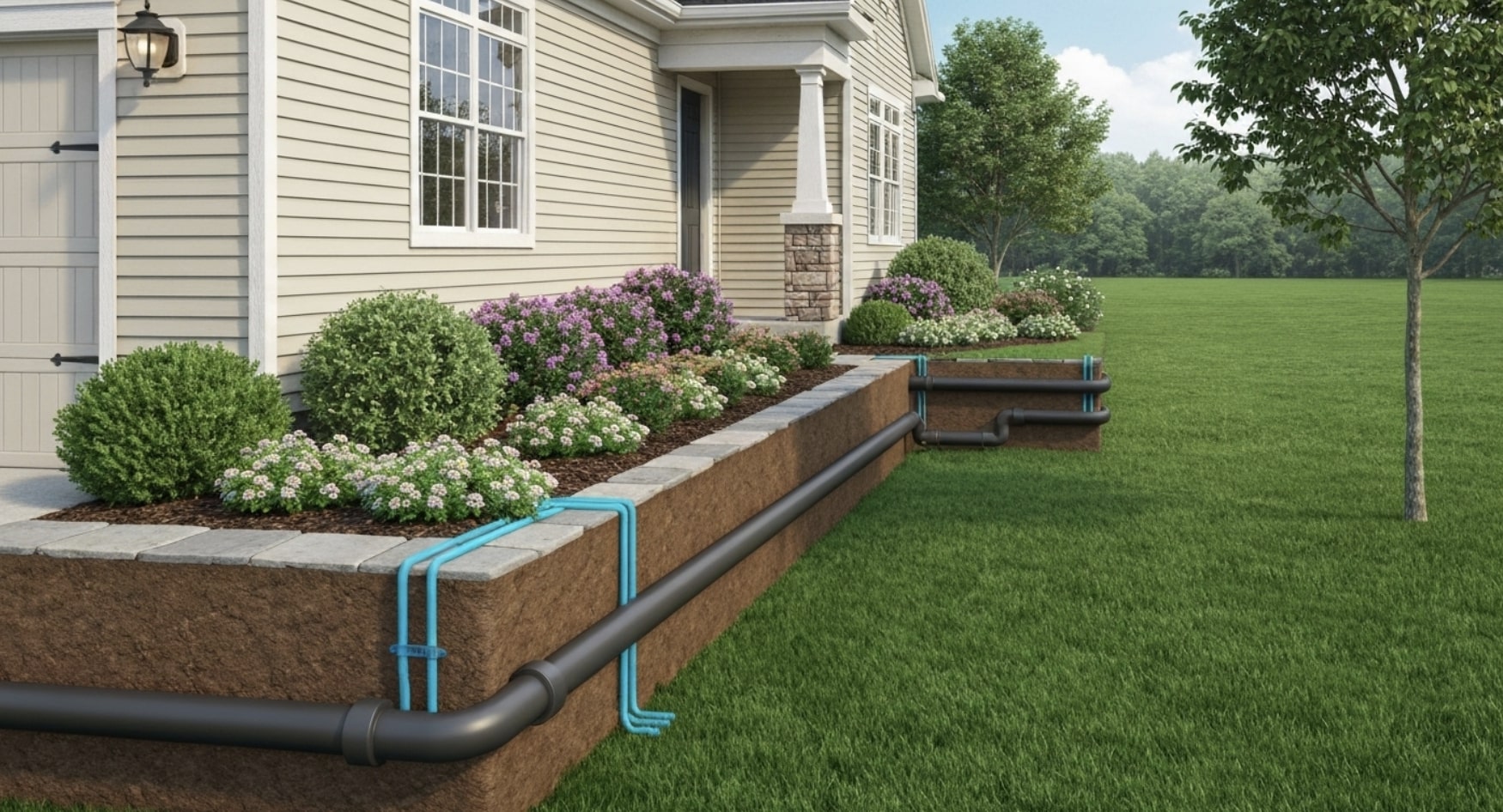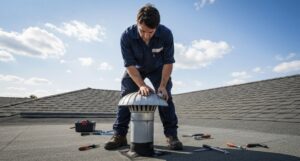When you think about home maintenance, you probably focus on what you can see, like a fresh coat of paint or a tidy lawn. But what about the systems working tirelessly behind the scenes? Your home’s sewer line is one of its most critical components, responsible for carrying all wastewater away. Ignoring this vital part of your plumbing system can lead to messy backups and costly sewer line issues. Prioritizing its upkeep is just as important as maintaining the interior of your house. This guide will explore why sewer line maintenance is essential not only for your home’s functionality but also for protecting its value.
Understanding Your Home’s Sewer Line System
So, what exactly is a sewer line? Think of it as the main artery of your home’s plumbing system. This large-diameter pipe connects your house’s drains to the public sewer system or a private septic tank. It’s buried underground, running from your property to the street.
The importance of this underground pipe cannot be overstated. Its primary role is to ensure a clean and sanitary living environment by safely transporting all wastewater—from toilets, sinks, showers, and appliances—away from your home. A functional sewer line prevents the accumulation of unsanitary water and waste on your property.
Without a properly working sewer pipe, your entire plumbing system would come to a standstill. The consequences range from inconvenient backups to serious health hazards and expensive property damage. That’s why keeping this line clear and in good repair is a fundamental responsibility for any homeowner.
Common Causes of Sewer Line Blockages
Many common household activities can directly contribute to sewer line issues. Being mindful of what you send down your drains is one of the most effective ways to prevent clogs and backups in your sewer pipe. Are you guilty of any of these habits?
Pouring grease or cooking oil down the kitchen sink is a primary cause of blockages. As the grease cools, it solidifies and sticks to the inside of the pipes, gradually building up until it chokes off the flow of water. Similarly, flushing items that don’t break down easily can quickly create a stubborn clog.
To avoid these sewer line issues, be sure to avoid:
- Flushing paper towels, baby wipes, or feminine hygiene products.
- Pouring grease, fats, and oils down any drain.
- Putting fibrous or starchy foods like potato peels into the garbage disposal.
- Allowing hair and soap scum to build up in shower drains without a strainer.
External Factors Like Tree Roots and Aging Pipes
Beyond what happens inside your home, external forces are often at work creating problems for your main sewer line. Tree roots are a notorious cause of damage. As they grow, they naturally seek out sources of water and nutrients, and even a tiny crack in a sewer pipe can attract them. Once inside, they expand and create dense blockages that are difficult to clear.
The age of your plumbing system is another significant factor. Over time, pipes can deteriorate, corrode, or crack due to temperature fluctuations and shifting soil. Improper installation can also lead to “bellies” or sags in the line where wastewater collects and causes blockages.
When these issues occur, a simple cleaning may not be enough. Significant damage from roots or deterioration often requires professional sewer repair to prevent recurring backups and protect your property from water damage. According to Redfin, a real estate brokerage, “fixing a damaged sewer pipe can cost as much as $300 per foot.” [1]
Warning Signs of Sewer Line Trouble
Recognizing the early signs of sewer line issues is key to preventing a major disaster. If you notice one or more of these symptoms, it’s time to investigate further. Here are some common signs and what they might mean for your sewer line:
| Warning Sign | What It Could Mean |
|---|---|
| Multiple Slow Drains | A blockage is forming in the main sewer line. |
| Gurgling Sounds | Air is trapped in the pipes due to an obstruction. |
| Foul Odors | Wastewater is stagnant or leaking from the sewer pipe. |
| Water Backups | The clog is severe and forcing water back into the home. |
| Wet Spots in Yard | The sewer line is leaking or broken underground. |
How to Catch Issues Early Before They Worsen
The best way to manage sewer line issues is to catch them before they become catastrophic. Proactive measures are far less stressful and expensive than emergency repairs. One of the most effective tools for early detection is a professional sewer scope inspection.
During this inspection, a technician feeds a high-resolution camera through your sewer line. This provides a real-time video feed of the pipe’s interior, revealing hidden problems like small cracks, root intrusion, misaligned sections, or developing blockages. This detailed view allows you to address problems before they cause a backup.
Scheduling these inspections routinely, especially if your home is over 20 years old or you’ve had frequent clogs, is a smart investment. It gives you a clear picture of your main sewer line’s health and helps you plan for maintenance or sewer repair on your own terms, not in the middle of a plumbing emergency.
DIY Sewer Line Maintenance Tips
How often should I clean out my main sewer line to prevent clogs? While professional cleaning is recommended every 18 to 22 months, your daily habits have the biggest impact. The most important preventative step is being careful about what goes down your drains.
Proper waste disposal is your first line of defense. Instead of pouring cooking grease into the sink, collect it in a container and throw it in the trash once it solidifies. This single habit can prevent the buildup of stubborn, pipe-clogging grease.
Here are a few other simple yet effective habits to adopt:
- Only flush human waste and toilet paper. Avoid flushing wipes (even “flushable” ones), paper towels, and hygiene products.
- Install strainers in kitchen and bathroom sinks to catch food particles and hair.
- Clean drain strainers regularly to prevent small buildups from becoming bigger problems.
- In guest bathrooms or other infrequently used areas, run water for a minute each week to keep the pipes clear.
Making Plumbing Worries Disappear, One Call at a Time
While preventative habits go a long way, some jobs require a professional touch. If you’re facing persistent clogs, suspect tree root intrusion, or simply want the peace of mind that comes with a thorough inspection, our team at Target Plumbers is here to help. We have the expertise and advanced equipment to tackle any sewer line issues, from routine cleaning to complex sewer repair. Don’t let a minor problem turn into a major headache that disrupts your life and damages your home.
Our licensed and certified technicians can perform a detailed sewer scope inspection to pinpoint the exact cause of your plumbing troubles. Based on the findings, we provide clear, actionable recommendations to restore your plumbing system to optimal condition. With our help, you can ensure your home’s sewer line is clean, clear, and ready to handle whatever your family sends its way. Contact Target Plumbers today to schedule an appointment and keep your home safe and functional.
Conclusion
Maintaining your sewer line is crucial not just for the functionality of your home, but also for preserving its value. Neglecting sewer line maintenance can lead to costly repairs and significant disruptions in your daily life. By adopting good habits, recognizing warning signs early, and implementing preventative measures, you can ensure a smoothly functioning sewer system that supports your home’s integrity. Remember, taking care of your sewer line is as essential as looking after the interior of your home.
Sewer maintenance was part of the bigger picture we covered in Plumbing Maintenance Tips That Every Homeowner Should Know—don’t skip it.
Frequently Asked Questions
How often should I clean out my main sewer line to prevent clogs?
For most homes, it is recommended to have your main sewer line professionally cleaned every 18 to 22 months, or roughly every two years. If you have older pipes or nearby trees with invasive roots, you may need more frequent cleaning to prevent serious sewer line issues.
Can I maintain my sewer line myself, or should I hire a professional?
You can perform daily maintenance yourself by being mindful of what goes down the drains and using drain strainers. However, for tasks like thorough cleaning, sewer scope inspections, and clearing major clogs, it is best to hire a professional plumber to avoid damaging your plumbing system.
Are there eco-friendly tips for maintaining sewer lines safely?
Yes, there are several eco-friendly tips. Use enzyme-based drain cleaners instead of harsh chemicals to break down organic waste. Always dispose of grease and oils in the trash, not the sink. Proper landscaping choices can also prevent root intrusion without harming trees or your sewer line.






